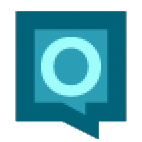
I was worried the cherry blossoms in Episode 12 of Descending Stories: Showa Genroku Rakugo Shinju were the only ones I’d see this year, after a frost hit the already-blooming DC blossoms! Fortunately that wasn’t the case, but I’ll miss this weekend’s peak in exchange for Boston’s snowy weather.
Today you can find my blog posts on the Anime Boston blog. But if you’d like some variety, I’ve prepared the usual Otaku Links:
- Mari Okada, the screenwriter behind anohana, Gundam: Iron-Blooded Orphans and so many more, is writing her autobiography! I find it interesting that Okada was 30 before she achieved success as a writer. It goes to show that it’s never too late.
- @karice67 translated an interview with Haruko Kumota, the creator of Showa Genroku Rakugo Shinju, about seeing her work in anime form. Color me not surprised at all that this is her first non-BL work.
- Which states have the most anime conventions? Spoiler alert: the biggest states.
- Here‘s a Tumblr that’s nothing but photos of empty public bathhouses in Japan. HT @frenchprinter.
- And here‘s a Tumblr that’s nothing but background signs in anime. HT The Rec Center.
- Sometimes the writing I do for clients overlaps with stuff I think Otaku Journalist readers would find interesting. This post, about 6 things women in tech are tired of hearing, is one of them.
- On Mary Sue and where young female writers belong in their own narratives: “She is everything that’s wrong with fanfiction, with girls writing stories, with fangirls, period,” but is it really that simple? Elizabeth Minkel investigates.
- One of my most unusual experiences lately was trying to explain Renaissance Faires to Amelia, who is British. Apparently these events where we don fairy wings and our best faux accents don’t exist in England! American Renaissance is a short but sweet documentary all about the subculture.
- Global Anime Song Streaming Service ANiUTa Unveiled with Over 50,000 Songs. I remember getting mad that I couldn’t even pay to buy anime music. ANiUTa isn’t overseas yet, but when it is my gripe will be a thing of the past.
Screenshot via this tumblr full of Rakugo images.









